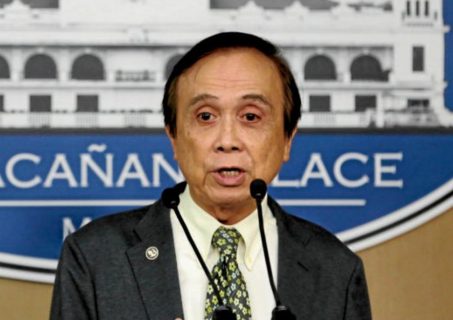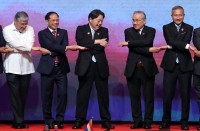
Statement of National Economic and Development Authority (NEDA) chief and Socio Economic Planning Secretary Ernesto Pernia:
“With our country growing at 6.5 percent in the second quarter of 2017, I am pleased to inform you that we remain as one of the best-performing economies in Asia. We are well on track to meeting our full-year target growth of 6.5 to 7.5 percent.
We have overtaken Vietnam’s 6.2 percent growth and Indonesia’s 5.0 percent growth rate. This puts the country as either the second or third fastest growing major Asian economy, next only to China whose growth rate is 6.9 percent growth in the second quarter. Malaysia and Thailand have not yet released their data, but we can expect that they will be lower than the performance of the Philippines for this quarter.
Taking the last quarter’s GDP growth, where the government’s spending performance was lackluster but where the private sector stepped up, and then this quarter’s GDP growth, where government really stepped up but where private sector slackened, just think what could happen if both government and private sectors together exerted that extra effort! We really need everyone and every sector to move in sync towards our goal of inclusive, a high trust and resilient society and a globally competitive knowledge economy.
On the demand side, growth in household consumption remained at 5.9 percent. This was supported by record-high consumer confidence, modest inflation rates, and improving labor market conditions. Government consumption expanded by 7.1 percent from a meager 0.1 percent in the first quarter of 2017. This shows a marked improvement in the absorptive capacity of our government agencies.
In addition to having improved on our expenditure management, government is moving towards reforming the tax system to make it simpler, fairer, more equitable, and also more internationally competitive. Together with other measures, like the lifting of the quantitative restrictions on rice, we expect to increase the purchasing power of the majority of Filipinos, particularly those coming from the lower income groups. We hope that the business sector would respond by coming up with innovative processes so that goods and services are produced with good quality but affordable prices.
On the supply side, industry was at 7.3 percent, supported by the growth of the manufacturing, and mining and quarrying sectors. Importantly, the agriculture sector continued to recove r from El Niño, expanding by 6.3 percent. Meanwhile, the services sector continued to be the main driver of growt h despite the slower growth of 6.1 percent relative to last year’s 8.2 percent and the previous quarter’s 6.7 percent.
We have outlined in the Philippine Development Plan (PDP) 2017-2022 the priority strategies for agriculture, industry and services sectors. These strategies will be backed by a comprehensive public investment program, but then again, we need the support of the business sector and civil society to make these work. On the part of government, President Duterte, as you know, has issued Executive Order no. 27 directing all governemnt instrumentalities, including GOCCs and LGUs, to exert every effort towards the full implementation of the PDP.
In the agriculture sector, the goal is to increase the income of farmers and fisherfolk. The priority strategies are diversification into high-value crops and greater value-adding activities. The Department of Agriculture has already launched a website showing a color-coded agricultural map that lists the crops that are appropriate for a certain location given soil quality and weather patterns. The next step is to teach farmers how to make the map work for them. We are hoping that the private sector can reach out to other farmers’ groups and associations, and introduce new technologies on further improving their productivity and adding value to their raw produce.
In the industry and services sectors, we have outlined strategies for greater backward linkage with domestic firms and forward linkages with global firms. We hope the private sector, especially the medium and large enterprises would take the initiative to link up with the micro and small enterprises. Let government know the catalytic intervention that is needed to make this happen. We just hope these will not all be in terms of tax breaks, which will be counterproductive to our efforts to ramp up our revenue collections.
And we need to correct the expression: “Government DOES NOT create jobs!” except in the public service; and even then, the intent is for a lean and mean bureaucracy given our plan to right size the government. We call on the private sector to support the call for greater dispersion of economic activity spatially, meaning across the regions, especially the lagging regions. We have been presenting the Build, Build, Build program of the government; and our public investment program for 2017-2022, a companion document to our PDP 2017-2022, has been uploaded on the NEDA website. We need the private sector to undertake the necessary economic activity to increase the utilization of these public investments and get involved in them. The private sector can also help us monitor the progress of implementation of these investments, knowing that the timely completion of these projects work in both our favors.
We will pursue in earnest the measures to ensure clean and efficient government. But we need the help of civil society to vigilantly monitor and report on erring officials in all instrumentalities and levels of government, including GOCCs and LGUs. We also need the business sector to conduct transactions with governemnt, ALWAYS, above board. Even as we continue to ease the cost of doing business, there will still be rules and regulations in place but they will be streamlined and made more transparent and simpler. Let us know if these are burdensome and how the burdens can be eased, but let us not try to circumvent the rules.
Given the performance of the economy in the first half of the year, we only need to grow by 6.5 percent to meet at least the lower bound of our full-year target of 6.5 to 7.5 percent. With ALL of us exerting ALL efforts, and moving in sync, to improve our economic performance, I can see the country demonstrating a more impressive performance for the rest of the year and even over the medium term.
We hope to have the continued support of the Filipino people, including the media, in achieving our collective plans and visions for the country. Together, let us aim and work for amatatag, maginhawa, at panatag na buhay para sa ating lahat.”
(See related story: https://www.eaglenews.ph/philippine-economy-surges/)







